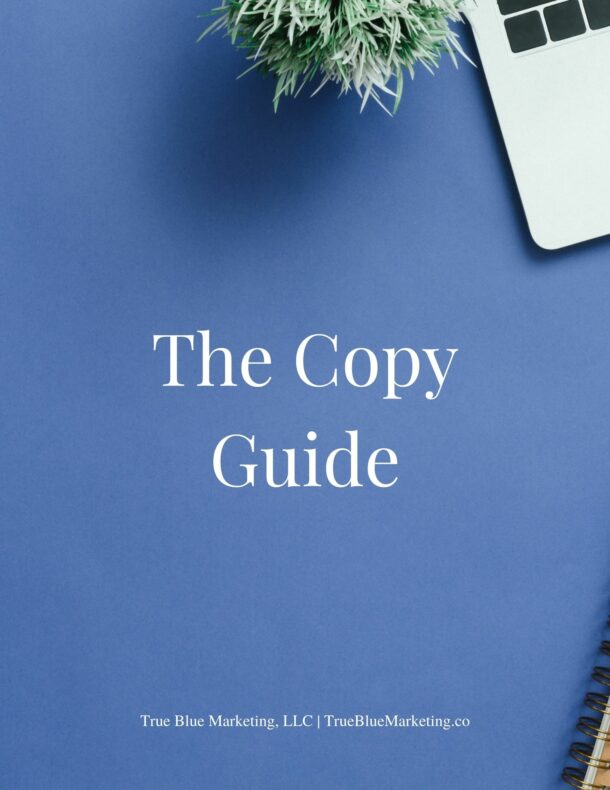Introductions are intended to share who you help, their problems, and the solutions you provide to those problems. If that feels like a lot to ask of a few sentences, I agree! It takes some focused time and practice to create an introduction that hits just right onto the points that truly matter to you, your business, and your ideal clients. Your introduction does not need to do the heavy lifting of pitching or selling your work, telling your story, or comparing you to the competition.
In the years I’ve spent working with entrepreneurs on crafting introductions I’ve learned that getting it to be enough information without being too much is about balance. Some people want to share a lot in their introduction yet too much information tends to bog down the primary goal of an introduction which is to introduce you and your work.
In this post, I’ll share some of the common mistakes people make when creating an introduction. If you’re looking for more details on how to create an introduction, check out this post.
Before we get into what can be too much for an introduction let’s go over the goals of any introduction, which are to show that you:
- Are an expert at what you do
- Truly understand your ideal clients
- Deeply see the problems (in marketing speak – pain points) of your ideal clients
- Know the way from their current problems to the solutions they want
Now let’s dive into how an introduction can quickly move from enough into the area of being too much by attempting to do too heavy of a lift for a few sentences.
Heavy Lift #1: Pitching
Pitching in an introduction is often done by someone either just starting a new business/job or someone who feels the need for a sale at that moment. Either way, pitching within an introduction reads as either inexperienced or desperate for work both of which are the opposite of the goals of an introduction.
This is not to say that pitching is a bad thing. There is a time to pitch your services and the timing of that should be within a space when both you and your audience are ready to close the deal. Anything before that stage is too early in the relationship to ask for this commitment.
Heavy Lift #2: Selling
Related to pitching your services are attempting to flat-out sell your audience within an introduction. This happens less often than pitching but does happen. If someone attempts to sign you up to work with them within their introduction, that’s this heavy lift.
Selling in an introduction usually ends in frequent rejection at a frequency that few people want to face. If done often enough it can lead to success but the overall rate of that success is going to be incredibly low.
Heavy Lift #3: Telling a Story
As there is a time for pitching, there is also a time for sharing your story. An introduction is often not the time to share your story unless you’re asked to do so. If you’ve gotten into a conversation with someone and they ask, go ahead and share away! Since this does come up in conversation, it can be helpful to have a version of your story that you’re ready to share if you’re asked to in a presentation, and if someone asks during a one-to-one conversation. You’ll want two versions of your story: one conversation and another that is a practiced talk to give to an audience. Sharing your story can be a powerful way to show how well you know your ideal clients if you help people overcome a problem you’ve faced.
Heavy Lift #4: Proving That You’re Better Than the Competition
This one can be difficult, especially if you have some impressive achievements. Let’s step back and consider why entrepreneurs want to prove that they’re better than the competition.
First, it is usually because of the desire to close a sale. As we referenced in the selling section, going right for the sale in an introduction doesn’t usually land well with the listener.
Second, do your ideal clients specifically want someone who is different from others in your line of work? If your ideal clients want to work with someone with a list of specific accomplishments, certifications, degrees, or awards, then include that in your introduction. If your ideal clients don’t care about your accomplishments, certifications, degrees, or awards, leave this info out of your introduction. Most people care less about the specific qualifications and more about finding the expert who can get them the results they want.
In very few professions will clients want someone who has a specific certification, has won a specific award, or hit certain goals. Here is an example list of when this might apply:
- A running coach who has run 10 marathons and placed in the top 10% in every one of them
- A real estate broker who has won the region’s diamond level award five or more times in the last seven years
- A sales consultant who guarantees she’ll train your team to hit a sales completion goal of 150% of the previous year’s sales, and can back that up with 20 times when she’s done this before
In most cases, your ideal client will not want to know where you gained your coaching certification, if you have a degree in business, or if you have been in business for five years or more. They’ll simply want to know if you can get them from the problem they’re currently facing to the goal they want to achieve.
Heavy Lift #5: Your Competition
On the idea of showing how you stand out from the competition or showing that you’re better than them, your ideal clients may not care that there are others who offer similar services or who deliver similar results. If you speak directly to who they are, the problems they face, and the solutions they want, then what others offer won’t matter because you’ve already shown that you understand them better than the competition.
Avoiding this set of five heavy lifts will make creating an introduction much simpler so you can move on to the next step of creating great copy – sharing your copy with the world. In this case, share your introduction to see how it lands with your ideal clients.
If you’re ready to build on your introduction to create website copy that truly appeals to your ideal clients, check out The Copy Guide.






